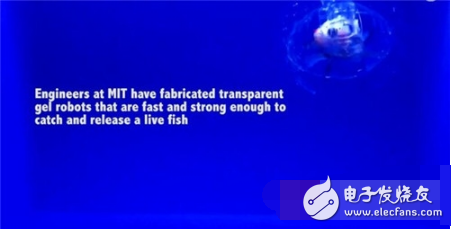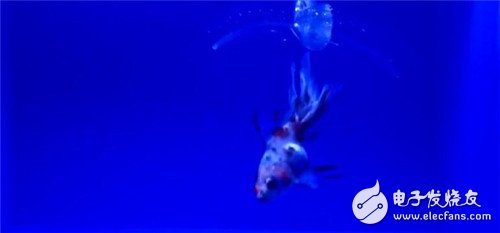"Catch the fisherman" hydrogel robot: in the future can help doctors complete the surgery
In everyone's impression, the fish in the water is not easy to catch, and the robots are all metal, which is easy to be seen by the outside world. But recently, some scientists have broken this normal. A team led by Xuanhe Zhao, an assistant professor of mechanical engineering at MIT, and Hyunwoo Yuk, a graduate student, recently found a new material for robots, the “remolded gold body†– hydrogel. According to foreign media reports, researchers at the Massachusetts Institute of Technology (MIT) have recently created a new robot made of hydrogel that is almost invisible to the naked eye when placed under water. “The hydrogel is soft, moist, and repellent and does not harm human organs,†Zhao said in a statement. “We have been working with medical organizations to try to make this system a soft and flexible hydrogel 'palm' to serve as a new tool for doctors in surgery.†Although made of a transparent hydrogel, the robot is able to move reasonably quickly, including catching live fish. After catching the live fish, it can also be released to make the small fish safely return to the water. Researchers say that this precise but gentle contact robot can be used in a variety of areas in the future, including assisting doctors with surgery. Because hydrogels are transparent and their acoustic and optical properties are similar to water, the robot can remain "invisible" in the water, and it's a piece of cake to catch a goldfish. In the test, this palm-shaped hydrogel robot can really catch the goldfish quickly, because it is very soft, the caught goldfish will not be injured. However, the development of hydrogel robots is not for goldfish, and the team is trying to use the technology in more meaningful areas. In everyone's impression, the fish in the water is not easy to catch, and the robots are all metal, which is easy to be seen by the outside world. But recently, some scientists have broken this normal. A team led by Xuanhe Zhao, an assistant professor of mechanical engineering at MIT, and Hyunwoo Yuk, a graduate student, recently found a new material for robots, the “remolded gold body†– hydrogel. According to foreign media reports, researchers at the Massachusetts Institute of Technology (MIT) have recently created a new robot made of hydrogel that is almost invisible to the naked eye when placed under water. “The hydrogel is soft, moist, and repellent and does not harm human organs,†Zhao said in a statement. “We have been working with medical organizations to try to make this system a soft and flexible hydrogel 'palm' to serve as a new tool for doctors in surgery.†Although made of a transparent hydrogel, the robot is able to move reasonably quickly, including catching live fish. After catching the live fish, it can also be released to make the small fish safely return to the water. Researchers say that this precise but gentle contact robot can be used in a variety of areas in the future, including assisting doctors with surgery. Because hydrogels are transparent and their acoustic and optical properties are similar to water, the robot can remain "invisible" in the water, and it's a piece of cake to catch a goldfish. In the test, this palm-shaped hydrogel robot can really catch the goldfish quickly, because it is very soft, the caught goldfish will not be injured. However, the development of hydrogel robots is not for goldfish, and the team is trying to use the technology in more meaningful areas. In the process of continuously improving the formulation of hydrogels, they also saw the application potential of this material in the field of software robots, but the team still has many difficulties to overcome in order to realize the new concept. For example, some hydrogel robots have been very fragile before, and may be "fractured" if they are not noticed. In addition, it is a nuisance to start such a sticky soft robot, and the robot has built-in charge or magnet. Hydrogel is mainly made of polymer and water. It is soft and moist, retains a certain shape and absorbs a lot of water. The researchers showed through a video of this water-driven palm-shaped robot that can quickly grab a goldfish in the water. People's impression of robots is that they are mostly made of metal, but many researchers (including researchers outside of MIT) have pointed out the need for software robots to interact safely with humans. The softness and stretchability of the software robot are very close to the skin and muscles of the human body. In this case, MIT researchers including Xuanhe Zhao and Hyunwoo Yuk created this possible hydrogel robot. “We want to find an accurate positioning for this technology and realize its real value by continuously improving the materials,†Yuk said. “As far as I know, our hydrogel robot is the industry's first hydraulically driven product, and I hope that there will be more ideas around this concept in the future.†Guangzhou Ehang Electronic Co., Ltd. , https://www.ehangmobile.com
